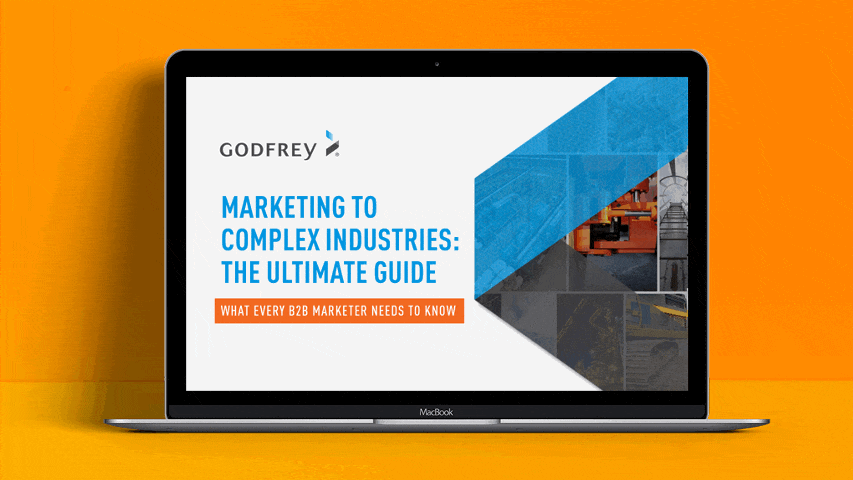One Enterprise, Multiple Travelers on the Buyer's Journey (PART 1)

When an enterprise makes a major buying decision, multiple participants have a say – and B2B marketers must answer their needs.
The “buyer’s journey” refers to any number of models describing how customers move from initial interest to final purchase decision. It’s also an effective framework marketers can use to plan how they develop and deploy a full range of techniques and resources to serve their target customer’s needs.
Used by both B2C and B2B marketers, it’s generally broken down into five stages:
- Awareness
- Research & Discovery
- Qualification
- Purchase
- Post-Sale
The typical consumer’s time on the path is relatively short and straightforward: moving from a pop-up offer on a web page to an Amazon purchase can sometimes take minutes.
In contrast, the B2B customer journey is rarely a straight line – B2B marketers know that they need to help customers navigate a winding path, one that can curl back on itself. The B2B buyer’s journey typically requires multiple types of information at each stage of the journey to convince the target business to make a significant purchase or investment commitment.
Multiple Journeys
In the B2B context, the notion of a “buyer’s journey” – accent on the singular buyer – is more than a little misleading.
Whether it’s choosing among several suppliers to provide high-end flooring products for a new high school building, entering a long-term supply contract for paper manufacturing chemicals or making a multimillion dollar investment in the latest generation of smart manufacturing systems, multiple decision-makers need to reach consensus about the best choice to serve their organization’s needs.
In B2B, it is the enterprise itself that is on a buyer’s journey, not one or two individuals. This multiparticipant dynamic leads to complex interactions and information exchanges between decision-makers and influencers.
And while each of these “buyers” may have increased roles or responsibilities for a specific stage of the enterprise’s journey, they all have informational/communications needs at all five stages – each individual responsible for moving the enterprise through the cycle, from awareness to buying decision, has their own “micro-journeys.”
Who are these buyers? Every organization is unique but, in general, they are a combination of top-level, C-Suite individuals and more mid-level operational professionals with significant input and responsibility for buying decisions:
COO/Manufacturing Directors: Senior-level people who define current and future operational needs of the enterprise. They’re usually the main target of B2B marketing and, while they often have the final “sign-off” on big purchases, they operate as part of a team.
CIO/IT Department: Increasingly important in making decisions about every aspect of medium and large-scale enterprises, because IT technology is now deeply interwoven into core functions of every part of a business.
CFO/Finance: It’s often thought that this audience is just an influencer, without a full path on the buyer’s journey. They understand the financial requirements and impacts of a major B2B investment and demand that B2B marketers respond to their need for information related to ROI, offering ways to qualify different vendors.
Human Resources: To stay competitive, businesses must hire the best personnel, and provide the right kinds of training to keep their skills current. Thus, HR departments play a critical role in helping make sure that any major purchasing decision by the enterprise is properly supported.
Enterprise CEOs: A key part of this multiplayer dynamic, they set the long-term strategy for the company, and are just as likely to be travelling in parallel with the rest of the company’s leadership from awareness to purchase and post-sale support.
As B2B marketers sharpen their understanding of these diverse audiences, and how they interact across the buying cycle, a new view has emerged: The B2B buyer’s journey is a matrix of intersecting and overlapping information and messaging needs.
In the past, some of these audiences might have been considered “influencers” only, with some input but not really integral to the overall buyer’s journey – and thus, not worth the investment in B2B marketing resources to answer their needs.
That approach risks leaving key players under-informed, and thus, unwilling to complete their company’s journey to your product or solution. B2B marketers need to make certain that creative, effective, well-targeted information about their products and services answers the questions and concerns of multiple B2B buyers.
Multiple Journeys: What information is needed? In our next post on this topic, we’ll look at how these multiple “travelers” have information needs that differ – and how they overlap. As an example, we’ll consider how all the above audiences help a manufacturer plan how it will invest in a major upgrade of their production systems to be Industry 4.0 ready.
Sign Up for our Newsletter - Get agency updates, industry trends and valuable resources delivered directly to you.
Brian Moore - Content Director
A storyteller with three decades of B2B writing and content development experience, Brian loves talking to engineers and technology-oriented professionals. He knows they have great stories to tell.




